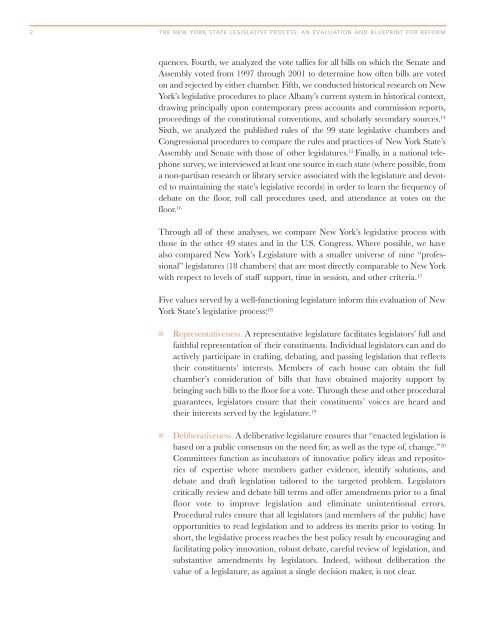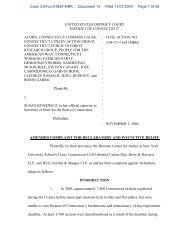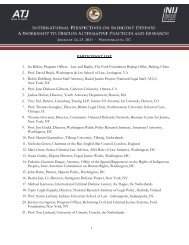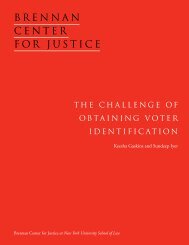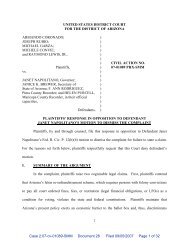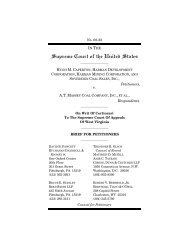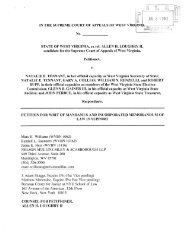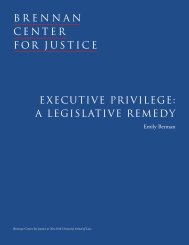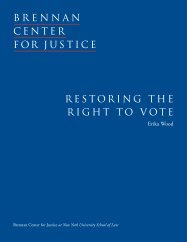THE NEW YORK STATE LEGISLATIVE PROCESS: AN ...
THE NEW YORK STATE LEGISLATIVE PROCESS: AN ...
THE NEW YORK STATE LEGISLATIVE PROCESS: AN ...
Create successful ePaper yourself
Turn your PDF publications into a flip-book with our unique Google optimized e-Paper software.
2 <strong>THE</strong> <strong>NEW</strong> <strong>YORK</strong> <strong>STATE</strong> <strong>LEGISLATIVE</strong> <strong>PROCESS</strong>: <strong>AN</strong> EVALUATION <strong>AN</strong>D BLUEPRINT FOR REFORM<br />
quences. Fourth, we analyzed the vote tallies for all bills on which the Senate and<br />
Assembly voted from 1997 through 2001 to determine how often bills are voted<br />
on and rejected by either chamber. Fifth, we conducted historical research on New<br />
York’s legislative procedures to place Albany’s current system in historical context,<br />
drawing principally upon contemporary press accounts and commission reports,<br />
proceedings of the constitutional conventions, and scholarly secondary sources. 14<br />
Sixth, we analyzed the published rules of the 99 state legislative chambers and<br />
Congressional procedures to compare the rules and practices of New York State’s<br />
Assembly and Senate with those of other legislatures. 15 Finally, in a national telephone<br />
survey, we interviewed at least one source in each state (where possible, from<br />
a non-partisan research or library service associated with the legislature and devoted<br />
to maintaining the state’s legislative records) in order to learn the frequency of<br />
debate on the floor, roll call procedures used, and attendance at votes on the<br />
floor. 16<br />
Through all of these analyses, we compare New York’s legislative process with<br />
those in the other 49 states and in the U.S. Congress. Where possible, we have<br />
also compared New York’s Legislature with a smaller universe of nine “professional”<br />
legislatures (18 chambers) that are most directly comparable to New York<br />
with respect to levels of staff support, time in session, and other criteria. 17<br />
Five values served by a well-functioning legislature inform this evaluation of New<br />
York State’s legislative process: 18<br />
■ Representativeness. A representative legislature facilitates legislators’ full and<br />
faithful representation of their constituents. Individual legislators can and do<br />
actively participate in crafting, debating, and passing legislation that reflects<br />
their constituents’ interests. Members of each house can obtain the full<br />
chamber’s consideration of bills that have obtained majority support by<br />
bringing such bills to the floor for a vote. Through these and other procedural<br />
guarantees, legislators ensure that their constituents’ voices are heard and<br />
their interests served by the legislature. 19<br />
■ Deliberativeness. A deliberative legislature ensures that “enacted legislation is<br />
based on a public consensus on the need for, as well as the type of, change.” 20<br />
Committees function as incubators of innovative policy ideas and repositories<br />
of expertise where members gather evidence, identify solutions, and<br />
debate and draft legislation tailored to the targeted problem. Legislators<br />
critically review and debate bill terms and offer amendments prior to a final<br />
floor vote to improve legislation and eliminate unintentional errors.<br />
Procedural rules ensure that all legislators (and members of the public) have<br />
opportunities to read legislation and to address its merits prior to voting. In<br />
short, the legislative process reaches the best policy result by encouraging and<br />
facilitating policy innovation, robust debate, careful review of legislation, and<br />
substantive amendments by legislators. Indeed, without deliberation the<br />
value of a legislature, as against a single decision maker, is not clear.


